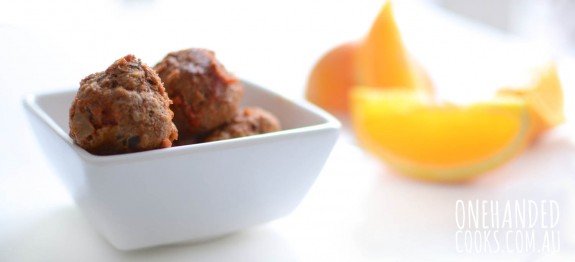Boosting Your Child’s Iron Intake
Boosting Your Child’s Iron Intake
If you have a baby and are starting solids, you might have heard the word “iron” being thrown around a lot. That’s because iron is essential for growing babies and toddlers. The problem is, that iron deficiency is most common between the ages 6-24 months. From around 6 months of age iron levels start to deplete and the introduction of solids is necessary to maintain normal iron levels. Before this babies have enough iron from stores at birth and from the natural goodness in breast milk or formula.
While it is important that your child consumes enough iron from food, the overall composition of their diet (or, the types of foods consumed together) is also important to their iron status.
Reasons why iron is an essential nutrient
- Needed for normal growth and brain development
- Involved in energy production
- Required for oxygen transport around the body
- Required for oxygen storage in the muscles
- Helps in maintaining a healthy immune system.
Symptoms of low iron levels
- Appearing pale and lacking energy
- Becoming uninterested in playing and learning
- Complaining of headaches
- Having a poor appetite
- Developing cognitive and developmental delays.
*If you suspect iron deficiency in your child please consult your GP or paediatrician for diagnosis.
Important things you need to know about iron
- Although breast milk contains less iron than cow’s milk, the iron in breast milk is up to 50% more bioavailable – meaning it is much better absorbed by the body compared with cow’s milk.
- Wholegrain cereals, meat, fish and poultry are the major contributors to iron intake in Australia & New Zealand
- Iron is generally poorly absorbed by the body. Only ~20% of iron absorbed from haem iron sources and between 2-8% from non-haem iron sources
- What are haem iron sources? These come from animal foods and include red meat (the richest source of iron) – beef, lamb, veal; offal – liver, kidney; chicken; pork; egg yolks and fish
- What are non-haem iron sources? These come from plant foods including wholegrain breads and cereals; lentils and legumes; nuts, seeds and nut butters; leafy green vegetables – e.g. spinach and broccoli, iron fortified breakfast cereals and some animal foods (red meat, eggs, cheese and cow’s milk also contain non-haem iron)
- Non-haem iron sources are a very valuable source of iron for vegetarian children so it is important that a variety of these foods are included in their diet daily
- Some dietary components help to INCREASE iron absorption: vitamin C (found in many fruit and vegetables) and meat and fish INCREASE iron absorption from non-haem iron sources
- Other dietary components can DECREASE iron absorption: calcium (found in dairy foods), phytates (found in the husks of grains e.g bran and wheatgerm) and polyphenols (found in tea and coffee) DECREASE iron absorbtion from non-haem iron sources.
Iron requirements in children
Recommended daily intakes (RDIs) have been set by the National Health & Medical Research Council (NH&MRC) to ensure the body has enough circulating iron in the blood as well as good body stores of iron.
| Age | RDI |
| 7-12 months | 11mg |
| 1-3 years | 9mg |
| 4-8 years | 10mg |
| 9-13 years | 8mg |
Iron toxicity
There is such a thing as iron toxicity. Too much iron in the body is harmful although it is rare to experience this through food alone. The risk of iron overload is greater if you take iron supplements, as the body is not great at excreting iron. It is recommended your children only take iron supplements as advised by your medical practitioner and do not exceed the dose recommended. Hemochromatosis is a condition characterised by too much iron in the body. In these cases you may be required to modify your diet to reduce iron intake and iron absorption.
Iron-rich red meat meals
Baby purees:
Lamb and white bean ratatouille puree
Lamb, quinoa and veggie dinner
Finger and family food:
Spaghetti bolognese leftover muffins
Beef, veggie & ricotta lasagne
Beef, veggie & brown rice meatloaf
Apricot chicken balls with coconut crumb
Examples of vegetarian meals that contain iron*
*remember, including vitamin C foods with plant sources of iron will help iron boost absorption.
Smooth pumpkin and lentil puree
Crispy baked veggie quinoa balls
Pick n mix lentil and veggie mash
Macaroni peas with spinach and lentils
Macaroni peas leftover muffins
This article was featured in our Autumn/Back to School issue of our Magazine. To find out more about our popular magazines or to purchase online see the links below:
Disclaimer: This information is intended for general use only. It does not constitute medical advice and is not intended to replace the personalised care and advice given to you by your health professional team. You as the reader/parent/caregiver must always discuss any concerns or questions about the health and well being of your baby or toddler with a healthcare professional. Please refer to our full disclaimer here.
Join us on Facebook for other foodie bits and pieces.



























